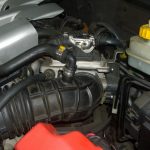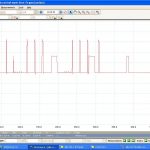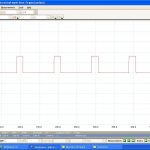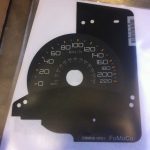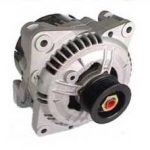Alfa Romeo, 156, 2.0l Twin Spark, Surging Idle
Vehicle
Alfa Romeo, 156, 2.0l Twin Spark, Surging Idle and stumble on take off, (sometimes).
Symptom:
Surging Idle When engine has warmed up, Worse with Air conditioner turned on
The Vehicle had been bought to the workshop to find out why the Idle was so erratic, the vehicle had undergone a few repairs already such as new spark plugs, air mass meter and throttlbody clean and reset the idle adaptions. Knowing this we set out to figure out why this problem in these vehicle is a hard one to pin point.
Diagnostics: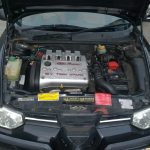
Scanning the vehicle With The Bosch KTS system The Engine management system showed no fault codes, however some quick research on how the system worked enabled us to closer examine the fault, the Engine management system used in the vehicle is a Bosch Motronic 1.5.5, system, which comprises of all your normal sensors and injectors, including knock sensor and oxygen sensor, the way in which the idle is adjusted is with the throttle body having a motor on the side which only controls idle speed, so the throttle body is able to control the throttle flap to about 10 degrees of operation at idle, when the accelerator cable is pressed this system is not in operation.
Knowing this small fact we decided to check the following starting with the basics,
- Spark output from coils,
- Live data readings of engine temp, air mass, throttle valve deg setting at idle, etc. (every thing looked ok – no clues here)
- Correct valve timing and tension on the timing belt.
- Smoke test – for air leaks in the manifold including PCV system (which revealed the dipstick O’rings where leaking.)
- Complete computer adaptation reset.
- Base idle setting on TPS switch.
During this time, the idle has gotten better and worse, each time a change has been made it should be noted that the idle adaptation should be reset. this After this will speed up diagnostic time.
The throttle actuator had to be tested more thoroughly, its started with a Disconnected continuity test between pins 6 & 7 of 4 ohms. (check)
The PicoScope was pulled out and the throttle actuator was tested.
It is stated in the Bosch KTS, tech diagrams that the throttle actuator should have a pulse width sent from the ECU with a peak of 7 volts.
This did occur and that’s when we found something strange, this revealed that the 7 volts was occurring and that sometimes where had 12 volts, assuming looking at wave forms, we quickly realised that the DC stepper motor was going open circuit during operation, which is why the voltage peaked to 12 volts, the resistance of the DC motor did pull the voltage down to 7 volts, as the manual suggested. Images on the page will reveal good and bad segments of the throttle actuator during idle operation.
Order in the new throttle actuator, install and retest, reset idle adaptations, and wait.
Summary:
This problem is very common to this particular model and we had even checked other forum world wide to source the issue and there is no conclusive answer to this problem, find the problem ourselves was very rewarding.
the vehicle as of 22/02/2016, has not had a throttle body fitted but as the units are not available new any more. I have mentioned to the client to import a unit from the UK, and fit then bring the vehicle down to reset. we cant wait for the outcome so we can call this one fixed.
Images

